Dates of the Vietnam War: 1959 -- April 30, 1975
Also Known As: American War in Vietnam, Vietnam Conflict, Second Indochina War, War Against the Americans to Save the Nation
Overview of the Vietnam War:
Ho Chi Minh Comes Home
There had been fighting in Vietnam for decades before the Vietnam War began. The Vietnamese had suffered under French colonial rule for nearly six decades when Japan invaded portions of Vietnam in 1940. It was in 1941, when Vietnam had two foreign powers occupying them, that communist Vietnamese revolutionary leader Ho Chi Minh arrived back in Vietnam after spending thirty years traveling the world.
Once Ho was back in Vietnam, he established a headquarters in a cave in northern Vietnam and established the Viet Minh, whose goal was to rid Vietnam of the French and Japanese occupiers. Having gained support for their cause in northern Vietnam, the Viet Minh announced the establishment of an independent Vietnam with a new government called the Democratic Republic of Vietnam on September 2, 1945. The French, however, were not willing to give up their colony so easily and fought back.
For years, Ho had tried to court the United States to support him against the French, including supplying the U.S. with military intelligence about the Japanese during World War II. Despite this aid, the United States was fully dedicated to their Cold War foreign policy of containment, which meant preventing the spread of Communism. This fear of the spread of Communism was heightened by the U.S. "domino theory," which stated that if one country in Southeast Asia fell to Communism then surrounding countries would also soon fall. To help prevent Vietnam from becoming a communist country, the U.S. decided to help France defeat Ho and his revolutionaries by sending the French military aid in 1950.
France Steps Out, U.S. Steps In
In 1954, after suffering a decisive defeat at Dien Bien Phu, the French decided to pull out of Vietnam. At the Geneva Conference of 1954, a number of nations met to determine how the French could peacefully withdraw. The agreement that came out of the conference (called the Geneva Accords) stipulated a cease fire for the peaceful withdrawal of French forces and the temporary division of Vietnam along the 17th parallel (which split the country into communist North Vietnam and non-communist South Vietnam). In addition, a general democratic election was to be held in 1956 that would reunite the country under one government. The United States refused to agree to the election, fearing the communists might win.
With help from the United States, South Vietnam carried out the election only in South Vietnam rather than countrywide. After eliminating most of his rivals, Ngo Dinh Diem was elected. His leadership, however, proved so horrible that he was killed in 1963 during a coup supported by the United States. Since Diem had alienated many South Vietnamese during his tenure, communist sympathizers in South Vietnam established the National Liberation Front (NLF), also known as the Viet Cong, in 1960 to use guerrilla warfare against the South Vietnamese.
First U.S. Ground Troops Sent to Vietnam
As the fighting between the Viet Cong and the South Vietnamese continued, the U.S. continued to send additional advisers to South Vietnam. When the North Vietnamese fired directly upon two U.S. ships in international waters on August 2 and 4, 1964 (known as the Gulf of Tonkin Incident), Congress responded with the Gulf of Tonkin Resolution. This resolution gave the President the authority to escalate U.S. involvement in Vietnam. President Lyndon Johnson used that authority to order the first U.S. ground troops to Vietnam in March 1965.
Johnson's Plan for Success
President Johnson's goal for U.S. involvement in Vietnam was not for the U.S. to win the war, but for U.S. troops to bolster South Vietnam's defenses until South Vietnam could take over. By entering the Vietnam War without a goal to win, Johnson set the stage for future public and troop disappointment when the U.S. found themselves in a stalemate with the North Vietnamese and the Viet Cong.
From 1965 to 1969, the U.S. was involved in a limited war in Vietnam. Although there were aerial bombings of the North, President Johnson wanted the fighting to be limited to South Vietnam. By limiting the fighting parameters, the U.S. forces would not conduct a serious ground assault into the North to attack the communists directly nor would there be any strong effort to disrupt the Ho Chi Minh Trail (the Viet Cong's supply path that ran through Laos and Cambodia).
Life in the Jungle
U.S. troops fought a jungle war, mostly against the well-supplied Viet Cong. The Viet Cong would attack in ambushes, set up booby traps, and escape through a complex network of underground tunnels. For U.S. forces, even just finding their enemy proved difficult. Since Viet Cong hid in the dense brush, U.S. forces would drop Agent Orange or napalm bombs which cleared an area by causing the leaves to drop off or to burn away. In every village, U.S. troops had difficulty determining which, if any, villagers were the enemy since even women and children could build booby traps or help house and feed the Viet Cong. U.S. soldiers commonly became frustrated with the fighting conditions in Vietnam. Many suffered from low morale, became angry, and some used drugs.*
* Diambil dari About.com.




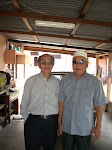


.jpg)


.jpg)




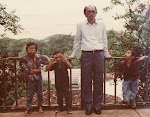
.jpg)
.jpg)
.jpg)
.jpg)
.jpg)
.jpg)
.jpg)
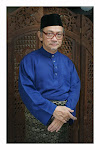

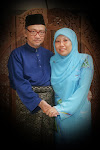



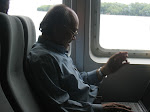


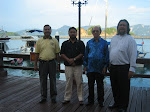



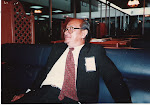
















No comments:
Post a Comment